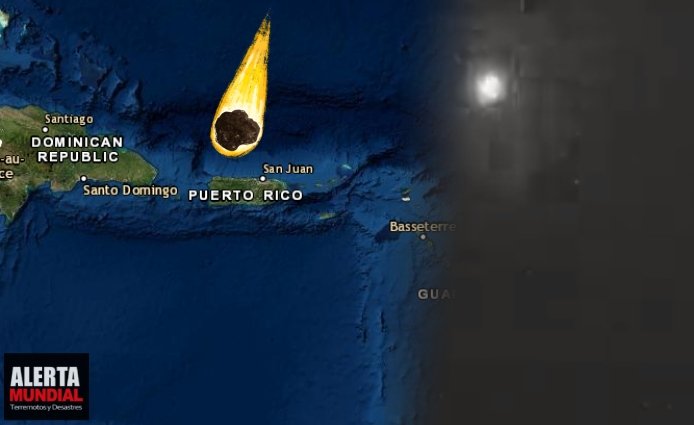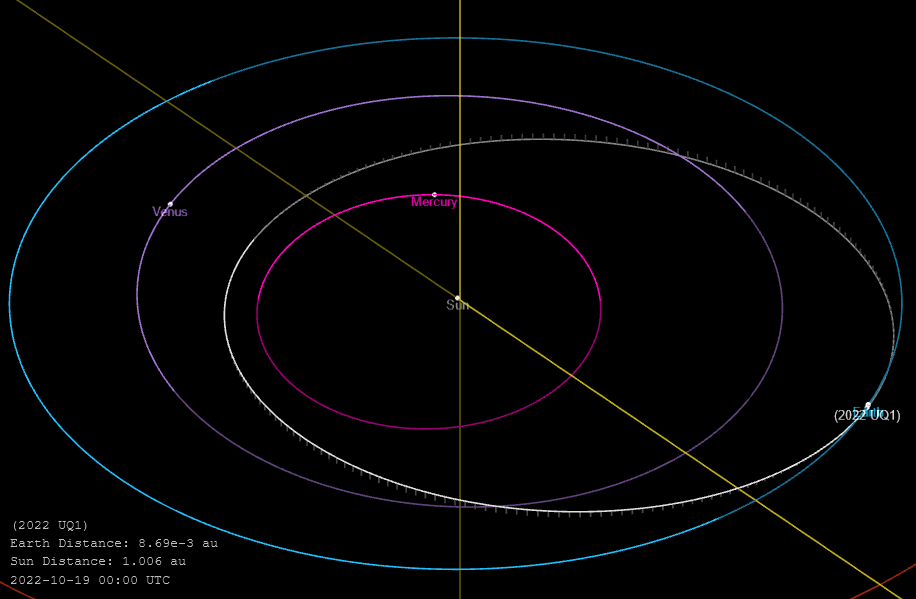Videos.
THE UNIVERSITY OF SALAMANCA @usal interviews our coordinator, Prof. @Josep_Trigo of @iSpaceSci @CSIC @IEEC_space
about the mission #DART and the expectations in the future exploration of #Didymos by #Hera in which he participates. https://diarium.usal.es/guillermo/2022/10/eureka-la-mision-dart-el-inicio-de-la-defensa-planetaria-contra-asteroides-con-josep-maria-trigo-rodriguez/ @geolmaster @CSICCat
Dated:
We have now discovered 30,039 near-Earth asteroids in the solar system—rocky bodies orbiting the sun on a path that brings them close to Earth's orbit. The majority of these were discovered in the last decade, showing how our ability to detect potentially risky asteroids is rapidly improving.
An asteroid is called a near-Earth asteroid (NEA) when its trajectory brings it within 1.3 Astronomical Units (au) of the sun. 1 au is the distance between the sun and Earth, and so NEAs can come within at least 0.3 au, 45 million km, of our planet's orbit.
Currently, near-Earth asteroids make up about a third of the roughly one million asteroids discovered so far in the solar system. Most of them reside in the asteroid belt between Jupiter and Mars.
Asteroids have been cataloged by astronomers for more than two centuries since the very first asteroid, Ceres, was discovered in 1801 by Giuseppe Piazzi. The first near-Earth asteroid, (433) Eros, was discovered nearly one hundred years later, on 13 August 1898.
The roughly 30 km Eros asteroid was discovered by Carl Gustav Witt and Felix Linke at the Urania Observatory in Berlin and independently by Auguste Charlois at the Nice Observatory. The stony asteroid's orbit brings it to within around 22 million km of Earth—57 times the distance of the Moon.
Not only is Eros the first known NEA, but the first asteroid to be orbited by a spacecraft and the first to have a spacecraft land on it. Early calculations of the space rock's orbit also enabled a precise determination of the then imperfectly known distance between the sun and Earth.
We often hear from astronomers and other scientists about "near-earth asteroids"—lumps of rock and metal that orbit through our Solar System, and pass close enough to our planet to pose an impact risk. But many people wonder what this means, and ask additional questions. How many are there? Where do they come from? And why should we care about them? In less than 90 seconds, our video will answer these questions and more, and show what ESA is doing about the risks they pose, helping to safeguard our planet. Credit: ESA.
How to un-Earth a near-Earth asteroid
Naturally, large asteroids were discovered first as they are so much easier to see. They were thought of as minor planets, a term still used today. As telescopes get more sensitive, we are finding many more and at a great rate, even those down to tens of meters in size.
Ground-based survey telescopes such as the Catalina Sky Survey in Arizona, in the United States, discover new asteroids every week. They are designed to scan large sections of the sky, looking for new objects moving in front of the backdrop of "motionless" stars.
More focused, large telescopes, such as the European Southern Observatory's Very Large Telescope (VLT), can then be used for follow-up observations, helping us better understand a "new" asteroid's path, size and even composition.
Gaia, ESA's space observatory on a mission to catalog one billion stars in the galaxy, has also helped us better understand the asteroid risk.
"Because of Gaia, we know more about the stars in the galaxy which act as a backdrop to asteroid observations," explains Tineke Roegiers, community support for the Gaia mission.
"Asteroid's positions are obtained against these background stars, so, the better one knows where the stars are, the more precisely the orbits of asteroids can be computed."
With the use of "Gaia's stars," even the orbits of already-known near-Earth asteroids have been improved, and some asteroids that were "lost" were found again.
ESA's asteroid risk list
"Of course, any asteroid discovered near Earth qualifies as a near-Earth asteroid, but many are found far from home," explains Marco Micheli, Astronomer at ESA's Near-Earth Object Coordination Center.
"New objects are observed over time, their movements are studied and with just a handful of data points from different nights their future positions can be predicted. Depending on the number and quality of observations, this can extend decades, even hundreds of years into the future."
These images represent radar observations of asteroid 99942 Apophis on March 8, 9, and 10, 2021, as it made its last close approach before its 2029 Earth encounter that will see the object pass our planet by less than 325,000 kilometres. NASA Deep Space Network’s Goldstone Deep Space Communications Complex near Barstow, California, and the Green Bank Telescope in West Virginia used radar to precisely track Apophis’ motion, gathering data that rules out any chance of Earth impact for at least a century. Credit: NASA/JPL-Caltech and NSF/AUI/GBO ESA's Near-Earth Object Coordination Center (NEOCC) in ESRIN, Italy, is home to the Agency's asteroid experts and risk assessors. The team activates its network of telescopes around the globe to get observations of new asteroids discovered and determine their impact risk, while also chasing up "old" asteroids that haven't yet been deemed safe.
Currently, 1,425 asteroids with a "non-zero" chance of impact are under their watchful eye, organized in the NEOCC's Asteroid Risk List which is constantly updated and freely available for anyone to see. You can even sign up to ESA's monthly "Asteroid Newsletter," and the asteroid news will come direct to you.
Will any of these asteroids strike Earth?
Currently, none of the near-Earth asteroids discovered so far are a concern, for at least one hundred years. Some of the smaller objects will and do impact Earth—but the most common are also the smallest and have little effect, except for creating trails of shooting stars as they burn up in the night sky.
When it comes to large and potentially devastating asteroids larger than 1 km across and above, the majority have been discovered and none show an impact risk for at least a century. For those that could impact later, we have plenty of time to study them and prepare a deflection mission.
The current priority are the medium-sized asteroids a few hundred meters in diameter. Many are still out there, waiting to be discovered, and at smallish sizes they're not quite as easy to find.
"The good news is that more than half of today's known near-Earth asteroids were discovered in the last six years, showing just how much our asteroid eyesight is improving," explains Richard Moissl, ESA's Head of Planetary Defense.
"As this new 30,000 detection milestone shows, and as new telescopes and methods of detection are built, it's only a matter of time until we've found them all."
THE UNIVERSITY OF SALAMANCA @usal interviews our coordinator, Prof. @Josep_Trigo of @iSpaceSci @CSIC @IEEC_space
about the mission #DART and the expectations in the future exploration of #Didymos by #Hera in which he participates. https://diarium.usal.es/guillermo/2022/10/eureka-la-mision-dart-el-inicio-de-la-defensa-planetaria-contra-asteroides-con-josep-maria-trigo-rodriguez/ @geolmaster @CSICCat
Dated:



